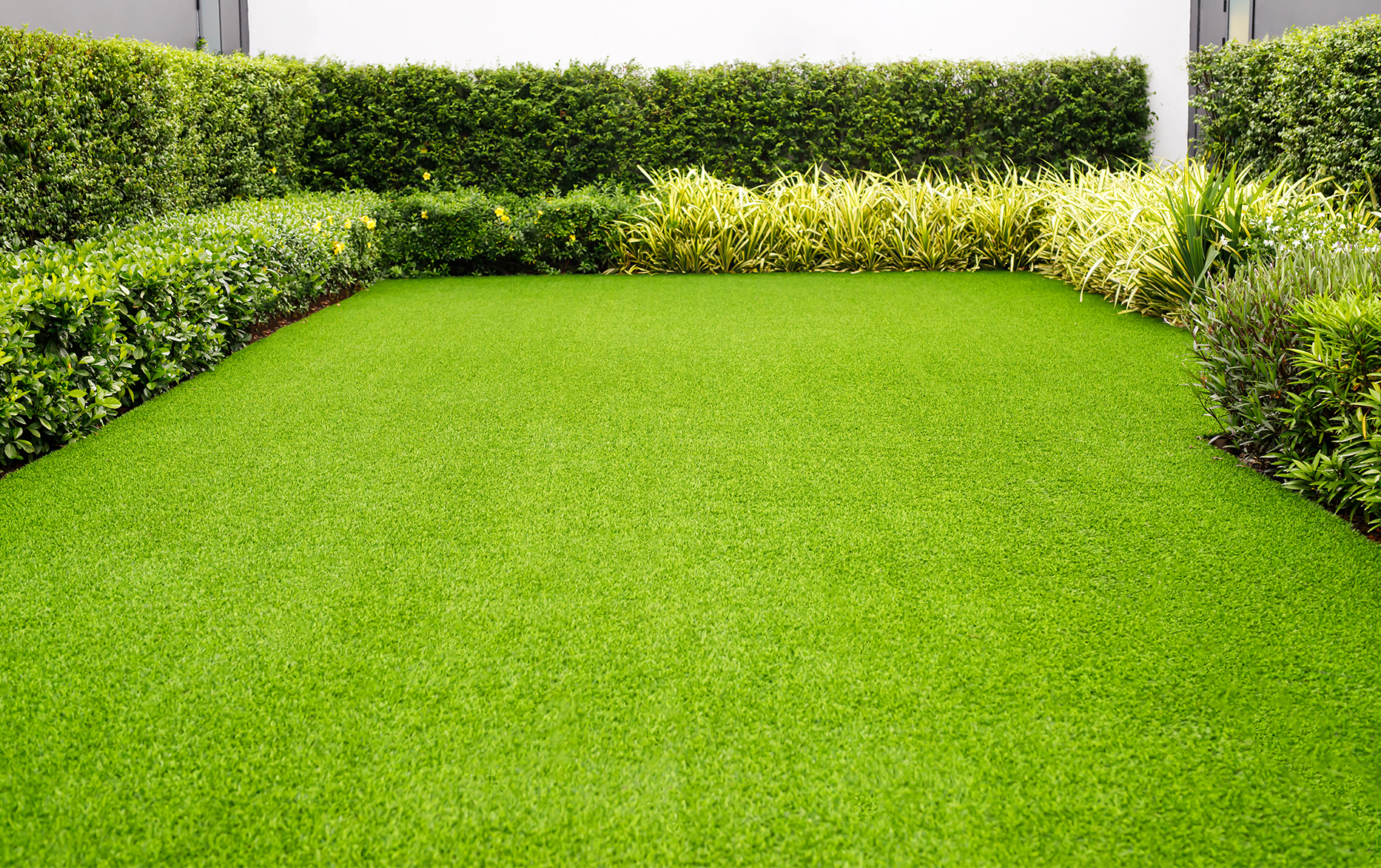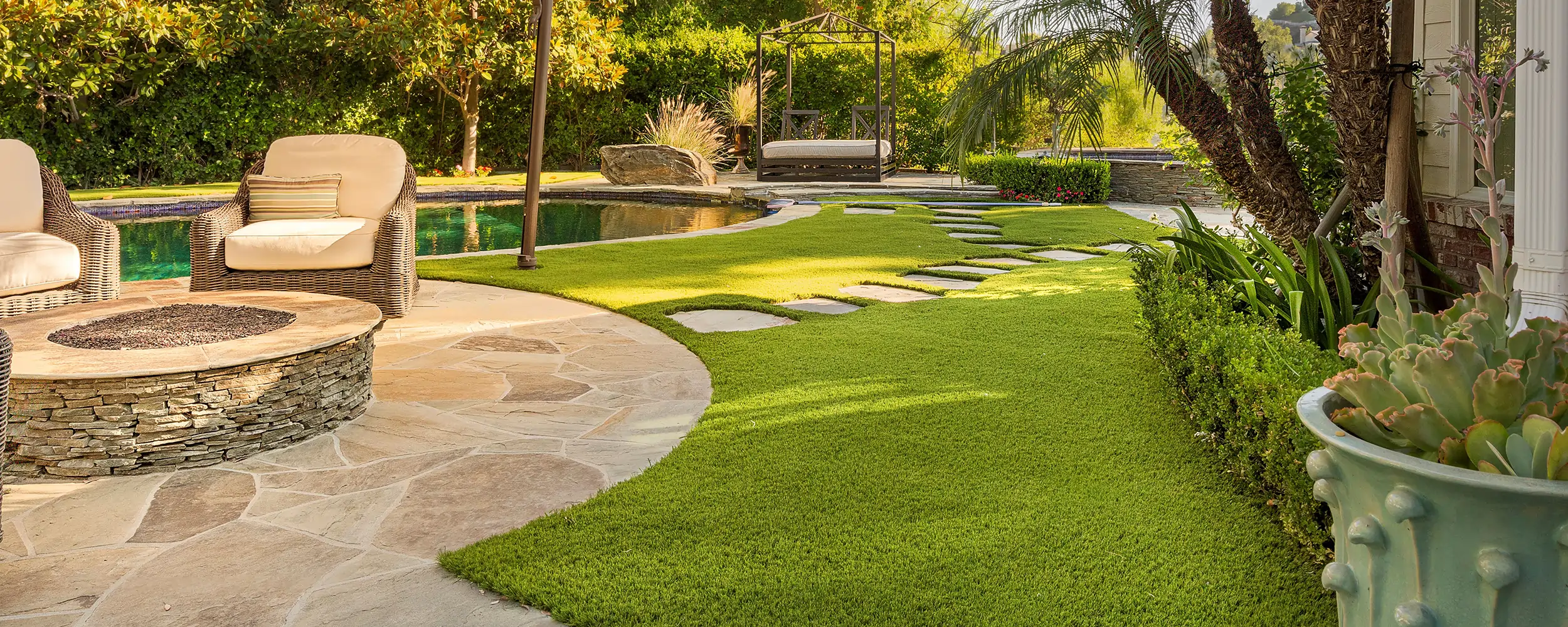Delve Into the Environmental Benefits of Opting for Artificial Lawn Solutions
The fostering of synthetic turf remedies provides a compelling opportunity to resolve pushing ecological difficulties. By substantially minimizing water use and reducing the application of dangerous chemicals, these options not only advertise sustainable landscape design but additionally safeguard local ecosystems. The reduced carbon footprint linked with decreased upkeep activities adds to a more lasting method to land monitoring. Nevertheless, the effects of these benefits extend past mere preservation efforts, elevating concerns concerning their long-lasting influence on environment preservation and general eco-friendly balance. Exploring these dimensions exposes an intricate interaction worth considering.
Water Preservation Benefits
One of the most considerable benefits of fabricated grass is its capability to conserve water. In comparison, man-made turf does not require watering, substantially decreasing the overall need for water resources.
By eliminating the demand for regular watering, fabricated turf adds to sustainable landscape techniques and helps minimize the ecological impact of excessive water intake. The preservation of water expands to the reduction of overflow, which can lead to dirt erosion and waterway contamination.
In addition, the installation of synthetic grass permits municipalities and home owners to allocate water sources more effectively, concentrating on important usages such as alcohol consumption water and agriculture. The change in the direction of synthetic lawn not just promotes liable water usage yet additionally aligns with broader environmental goals focused on protecting all-natural resources.
As communities progressively focus on sustainability, the water preservation advantages of synthetic grass offer an engaging instance for its fostering in household and business landscape design jobs.
Minimized Chemical Usage
The change to synthetic grass considerably reduces the reliance on chemical treatments commonly made use of in all-natural lawn upkeep. Standard turf management generally involves the application of herbicides, plant foods, and chemicals to promote development and control bugs. These chemicals can position risks to human wellness, regional wildlife, and the setting, adding to soil and water contamination.
In comparison, fabricated grass eliminates the demand for these unsafe materials. When installed, it requires very little upkeep, largely containing regular cleansing and occasional infill replenishment. This reduction in chemical usage not just profits the instant environment yet also adds to more comprehensive environmental security. By minimizing the launch of synthetic substances into the environment, synthetic grass promotes much healthier soil and water supply.
Moreover, the lack of chemical drainage related to man-made turf setups aids safeguard neighborhood waterways from contamination, sustaining aquatic life and preserving biodiversity. Phoenix turf companies. As communities progressively focus on sustainable methods, selecting synthetic grass provides a sensible solution that lines up with ecological conservation objectives. With this shift, residential property owners can appreciate rich green areas without compromising eco-friendly health and wellness, leading the way for a more lasting future
Reduced Carbon Impact

Moreover, the installment of synthetic grass can cause substantial water preservation. All-natural grass call for substantial amounts of water for irrigation, which not only includes in the carbon footprint related to water extraction and treatment however additionally strains local water resources. On the other hand, synthetic grass requires very little upkeep, needing no watering, consequently significantly decreasing water usage and its associated energy costs.
Additionally, the longevity of synthetic grass adds to its lower carbon effect. With a his explanation life-span of approximately 15 years or even more, the requirement for regular replacements is lessened, leading to much less waste and reduced energy usage in manufacturing and dealing with conventional turf options. In general, synthetic turf presents a lasting choice for ecologically conscious landscape design.
Environment Preservation
Habitat conservation is an essential factor to consider in the argument over landscaping selections, especially when comparing artificial lawn to natural grass. All-natural lawn lawns frequently require considerable upkeep, including the usage of plant foods, herbicides, and pesticides, which can detrimentally impact neighborhood environments. These chemicals can leach right into the soil and rivers, damaging native vegetation and fauna and interfering with regional environments.
Man-made lawn removes the need for hazardous chemicals, consequently protecting neighboring wildlife and preserving the integrity of surrounding environments. The installment of man-made lawn can lead to the conversion of previous yard areas into even more biodiverse landscapes, such as pollinator yards or native plant areas, which can support local wildlife.
Ultimately, the transition to synthetic grass not just preserves water and reduces upkeep initiatives however likewise promotes a much more harmonious relationship in between human tasks and the natural surroundings, advertising environment preservation in the process.
Long-Term Sustainability
Long-term sustainability is an essential consider reviewing the benefits of synthetic grass over traditional yard yards. One of one of the most substantial benefits of artificial lawn is its durability; it can last approximately 15-20 years with very little maintenance, whereas all-natural turf requires constant reseeding and replacement. This long life decreases the need for consistent resources, site here such as water, plant foods, and pesticides, which are important for keeping a healthy and balanced grass yard.
Furthermore, synthetic grass adds to a decrease in carbon discharges associated with yard care tools. Conventional grass usually need gas-powered lawn mowers, trimmers, and blowers, every one of which add to air contamination. Arizona artificial turf. In contrast, synthetic grass eliminates the requirement for such equipment, promoting a cleaner setting
Furthermore, the manufacturing of synthetic grass progressively utilizes recycled products, enhancing its sustainability profile. As manufacturers embrace environment-friendly practices, the environmental impact of artificial grass remains to diminish.

Conclusion
The fostering of man-made turf remedies provides significant ecological advantages, consisting of considerable water preservation, minimized reliance on harmful chemicals, and a reduced carbon footprint. Man-made turf help in maintaining natural environments by reducing land disruption and promoting long-lasting sustainability via the use of long lasting products. Collectively, these variables underscore the capacity of synthetic grass to add favorably to ecological health and wellness and use a viable option to typical landscaping methods in a significantly resource-conscious world.
In contrast, man-made turf does not need watering, substantially reducing the overall demand for water sources. By decreasing the launch of synthetic substances right into the environment, man-made turf advertises much healthier dirt and water systems.
Additionally, the installment of man-made lawn can result in substantial water conservation. In contrast, fabricated turf needs very little upkeep, calling for no watering, therefore significantly decreasing water usage and its associated energy expenses.
